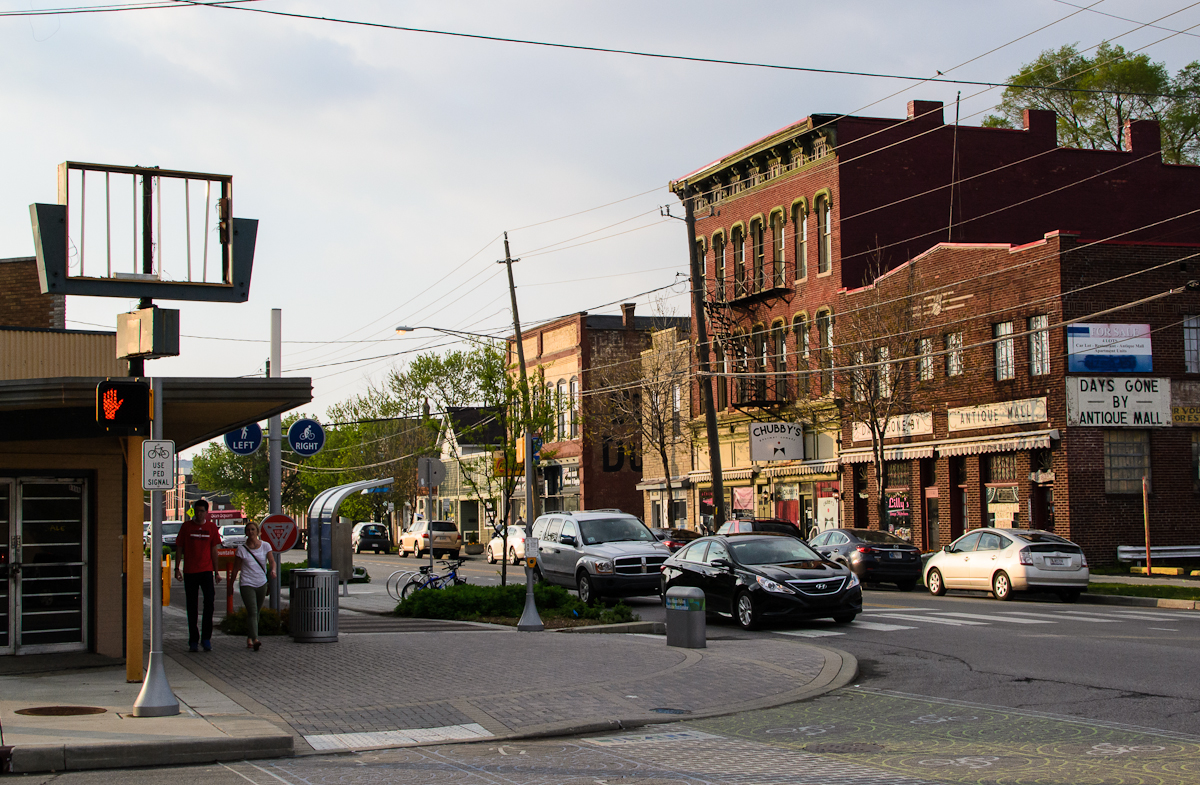Click here to read “Opportunity for growth: How reducing barriers to economic inclusion can benefit workers, firms, and local economies,” a companion paper on building inclusive cities.
Graphics and corresponding text were replaced on page 20 to reflect updated information regarding San Diego’s talent pool.
Nashville is the leading economic success story of the new South, held up by most other mid-sized U.S. metro areas as an aspirational example of what successful economic development looks like.
Beginning in the late 1990s, the city pulled ahead of a pack of sprawling southern cities, fueled by its specialization in professional and health care services. Newly-acquired professional sports teams and a growing music scene gave the city the varnish of big-city success. Growth skyrocketed, churning out jobs and turning the city into a magnet for skilled workers. Forbes recently ranked it as the top metro area–by far–for creating high-wage professional services jobs. Unemployment is below the national average for every racial group. Today, cranes dot the downtown, old neighborhoods are quickly being redeveloped with high-end housing and retail, and Nashville hot chicken and country music are the province of hipsters around the country.
But that’s only one side of the story.
Amid this unprecedented boom, earnings for the average worker fell by nearly 2 percent from 2010-2015–a larger decline than the U.S. overall–and half the region’s families still earn less than $50,000 a year. Runaway growth in downtown and newly upscale neighborhoods like Germantown exists alongside stagnation in parts of adjacent neighborhoods like historically African-American North Nashville. For a city that served as an epicenter of civil rights-era activism, race remains a clear dividing line for economic success. Criminal records, underperforming schools, and multi-generational poverty all keep a significant share of residents from participating in the Music City’s boom, and contribute to the fact that Davidson County, at the core of the region, is one of the hardest places in the country for a poor person to ascend to the middle class. Moreover, while current residents in these neighborhoods are isolated from the benefits of growth, they are battered by its downsides: Nashville’s boom created an affordable housing crisis pushing low-income residents into outlying, car-dependent suburban communities. As a result, in the first decade of the 2000s, the number of distressed neighborhoods in the suburbs rose five-fold.
These divergent storylines, in what is, by traditional standards, one of the country’s most economically successful metro areas, speak to a fundamental tension in the U.S. economy. Growth across each of the top 100 largest U.S. metropolitan areas, the lowest unemployment rate in a decade, a housing recovery, and a booming stock market belie deeper trends that point to narrowing opportunity for both historically marginalized populations and beyond.
For six months, Brookings worked with Nashville and two other metro areas—Indianapolis and San Diego—in an experimental process, the Inclusive Economic Development Lab, taking research to ground to help economic development organizations better understand the complexity of these challenges and begin to approach inclusive economic development as a growth and competitiveness imperative. In a companion paper, Opportunity for growth, Joseph Parilla describes the connection between growth and inclusion and outlines a framework for action from the economic development community, organized around the themes of dynamism, skills, and access. Here we offer lessons from these three economically diverse regions on how economic development organizations (EDOs) can begin to translate that growing recognition of the need for more inclusive growth and potential for leadership into real understanding and institutional commitment. We find that:
Inclusive growth is an increasingly urgent local priority.
Facing challenges from the well-publicized loss of manufacturing jobs (and growth of lower-paying positions), to rising housing costs and lack of access to transit, a growing share of the population in most regions is struggling to access opportunity. These trends threaten individuals’ futures and the trajectory of regional growth, creating both a moral and a business imperative to act.
Regional economic development organizations have a significant role to play, but that will require a continuing evolution in the field.
As regional organizations representing the business community, EDOs have the potential to add new resources and perspectives to local coalitions addressing what is arguably the defining economic and social challenge facing cities and regions. But this will not necessarily be a straightforward or comfortable process. EDOs will need to continue an evolution from prioritizing business attraction and marketing to making long-term investments in competitiveness, while also focusing on ensuring that more residents can connect to economic gains. This process will involve managing pressures from stakeholders representing both entrenched interests and advocating for dramatic transformation.
A new narrative can lay groundwork for action.
Facing a growing challenge spanning a multitude of policy areas, geographies, and populations—some historically beyond the purview of economic development—EDOs will likely struggle at first to develop a cohesive response. The Inclusive Economic Development Lab responded to this conundrum by leading EDOs through the process of creating a narrative examining populations excluded from prosperity, the barriers they face, the costs of that exclusion, and how the EDOs’ tools could be applied to seek solutions. This approach provides an outlet for EDOs to strategically examine the problem and how it relates to their growth mission, deepen local partnerships, lay the groundwork for necessary institutional change, and ultimately better position their efforts for success.
EDOs will need to be strategic about how they intervene.
With a multitude of challenges and demands from stakeholders, EDOs face no shortage of potential areas for action. But to develop an effective and sustainable response, they need to think carefully about their strengths and how they could be deployed against their region’s challenges (assuming the absence of major new resources). This process should also consider the potential to link and collaborate with existing efforts in the region (especially in the areas of community and workforce development). This paper and the companion paper outline potential areas for engagement around:
- Practice (e.g., expanding access to business networks and better targeting programs that help companies);
- Policy (e.g., advocating for new investments in transit and affordable housing); and
- Partnership (e.g., using their convening power to unite and educate leaders across sectors and communities).
A vanguard of EDOs, including those profiled in this report, are in the process of developing a response to the inclusive growth challenge in these areas. Their leadership will help determine how metropolitan America responds to an accelerating mix of disruptive forces facing the U.S. over the coming decades.
The Brookings Institution is committed to quality, independence, and impact.
We are supported by a diverse array of funders. In line with our values and policies, each Brookings publication represents the sole views of its author(s).







